Feeling bloated? It happens to the best of us. *raises hand*
And while all types of bloat feel awful, there are actually two different kinds: gas bloat and water bloat.
The gassy kind of bloat makes you unbutton your jeans after eating certain foods—often beans, dairy, cruciferous veggies like broccoli or cauliflower, or greasy foods. “But we’re all very different, and some foods that might trigger gas for one person don’t for another,” says nutritionist Jessica Cording, RD.
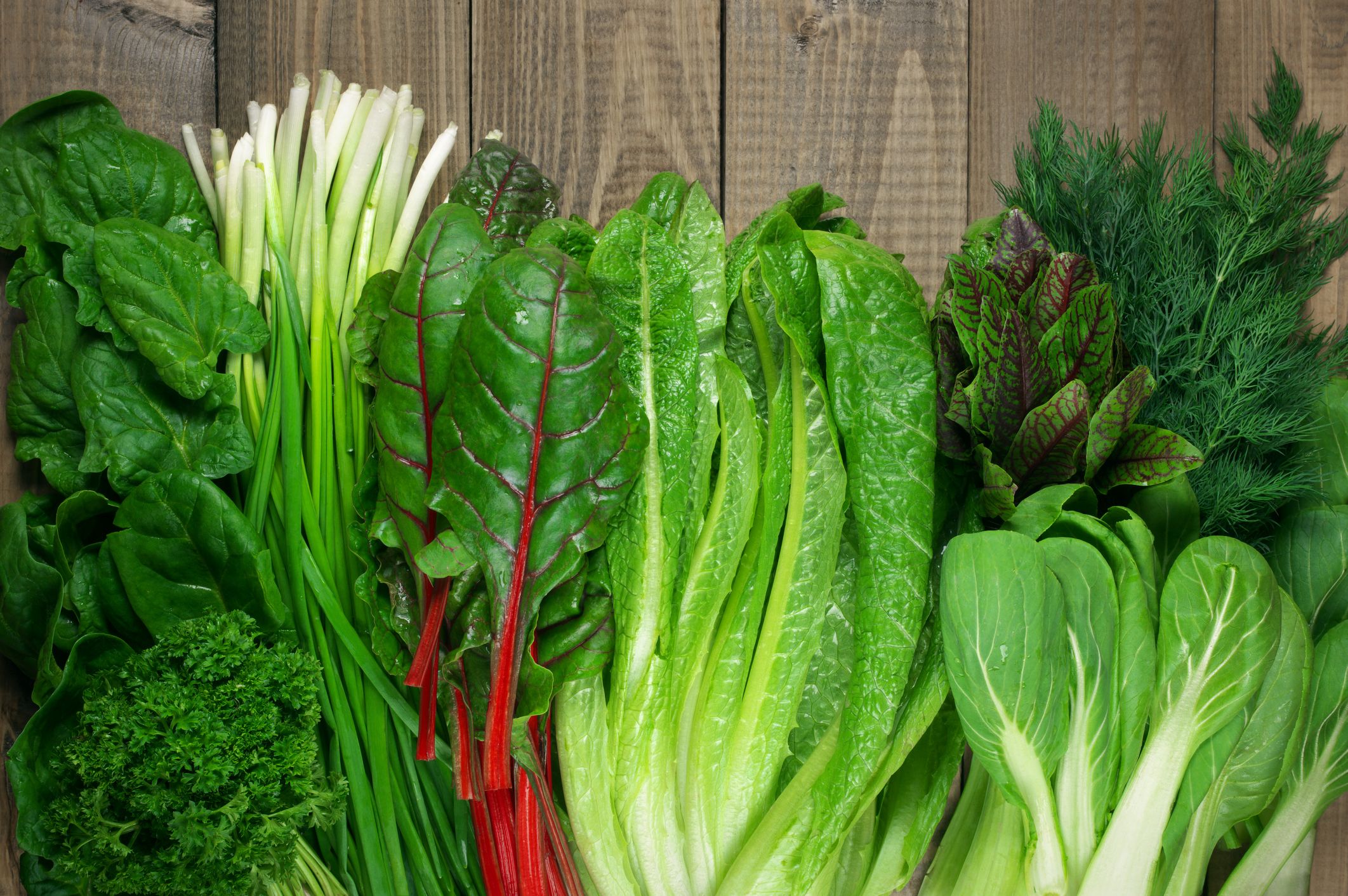
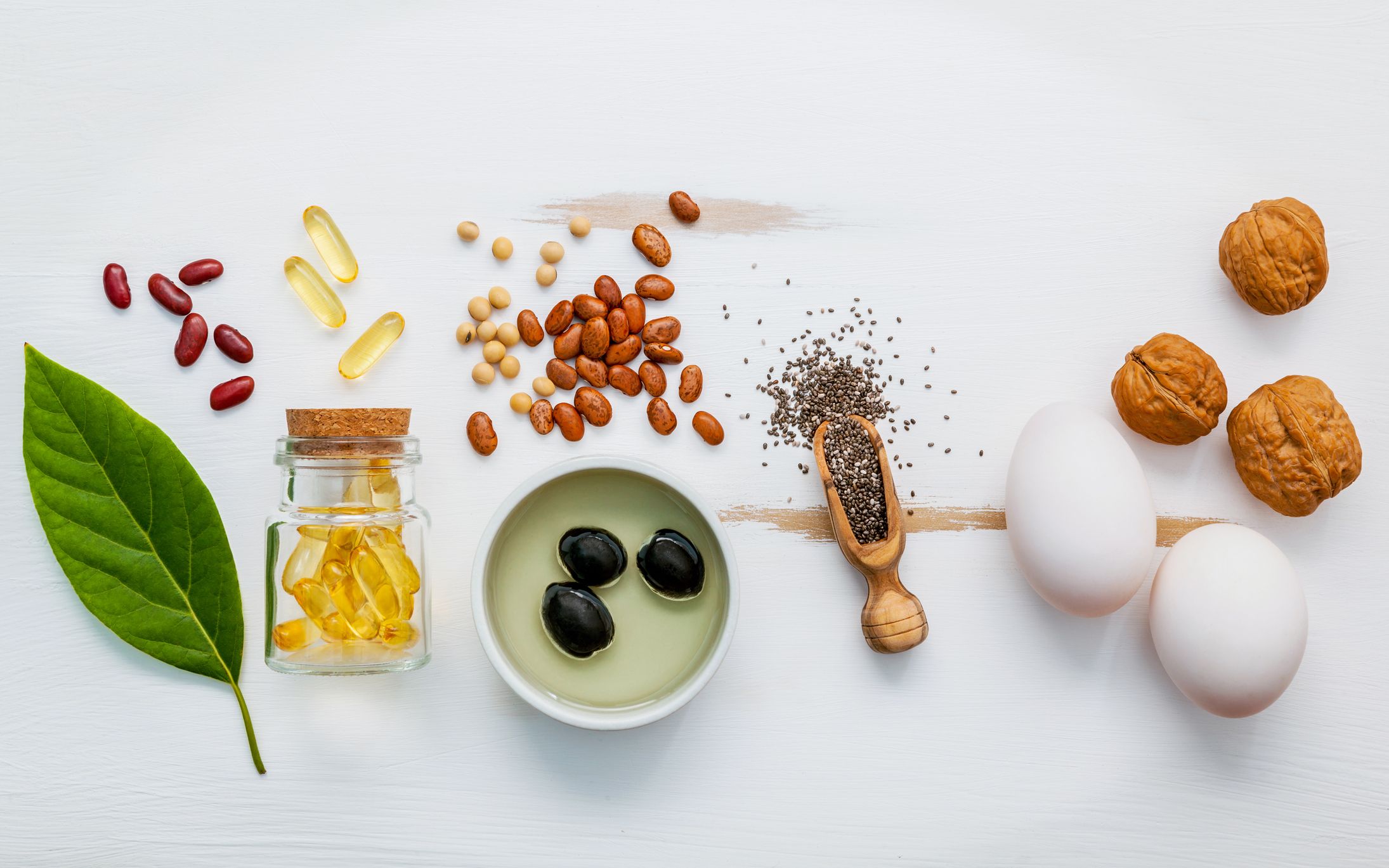

Water-retaining bloat makes you feel like the Michelin Man—puffy all over. It’s triggered by hormonal changes during your menstrual cycle, dehydration, or eating lots of salty foods and not enough potassium and water.
That’s why, it’s important to note, beyond eating the right foods, water is crucial f0r de-bloating, says Torey Armul, RD. Especially when you’re eating high-fiber foods. “When you eat fiber, you need to drink enough water to digest it and move efficiently through your GI tract.” Armul adds that you may want to steer clear of fizzy water or seltzer, though, which can add extra gas to your digestive tract.
No matter the bloating culprit, the good news is that you can get back on track fast by loading up on these 16 nutritionist-backed noms.
1. Yogurt
 Getty Images
Getty Images
Yogurt is packed with probiotics—good bacteria that populate your GI tract to support a healthy digestive process and calm inflammation. “Probiotics are an important piece in the big picture of gut health, especially when you’ve got bloating and gas,” says Cording. Go Greek to bump up the protein to 20 grams while lowering the carb count, and enjoy it as dessert with some fresh fruit like grapefruit slices or blueberries.
Can’t digest yogurt because of the lactose? Try kefir, suggests Cording. “It’s 99 percent lactose free and has a greater variety of probiotic bacteria,” she says.
Per 7-ounce serving Greek yogurt: 146 calories, 4 g fat (2.5 g sat fat), 68 mg sodium, 8 g carbohydrates, 7 g of sugar, 0 g fiber, 20 g protein
2. Ginger
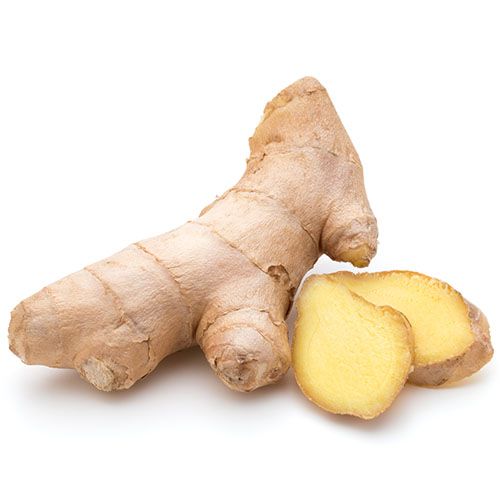 Getty Images
Getty Images
One of the oldest herbal medicines around, ginger’s anti-inflammatory properties work wonders on bloat and gas. “Ginger contains a digestive enzyme called zingibain, which helps the body break down protein,” says Tara Coleman, a clinical nutritionist in San Diego.
“It also has a nice relaxing effect on your intestines, reducing inflammation in your colon, which helps the food you eat pass through your system more easily, and in turn, reduce the bloat and gas you experience,” says Kristin Kirkpatrick, RD, wellness manager at the Cleveland Clinic Wellness Institute. Enjoy it in a warm cup of homemade tea to sip on it before, during, or after a meal.
Per 1 tsp fresh ginger: 2 calories, 0.01 g fat (0 g sat fat), 0 mg sodium, 0.4 g carbohydrates, 0.03 g of sugar, 0 g fiber, 0.04 g protein
3. Fennel
 Getty Images
Getty Images
Fennel is a natural diuretic that can also help banish intestinal gas (a.k.a. it works on both types of bloating). “The compounds anethole, fenchone, and estragole in fennel seeds have antispasmodic and anti-inflammatory properties that relax intestinal muscle and allow trapped gas to dissipate,” says Coleman.
While you can add the seeds to a cup of tea, Cording says you can also add a cup of sliced fennel bulb into your salad to add a little extra fiber to help you fill up and feel satisfied for longer.
Per 1 cup sliced fennel bulb: 27 calories, 0.2 g fat (0 g sat fat), 45 mg sodium, 6 g carbohydrates, 3 g of sugar, 3 g fiber, 1 g protein
4. Bananas
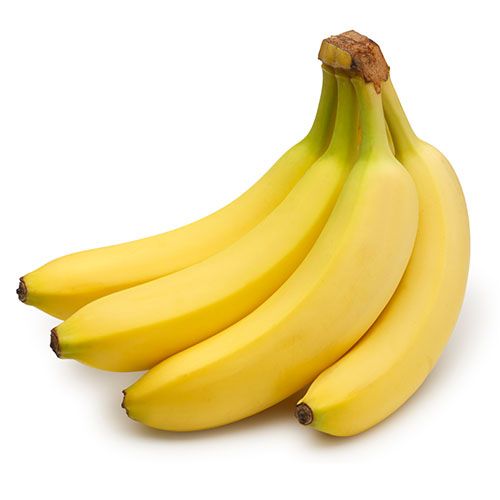 Getty Images
Getty Images
Potassium is the main reason this low-maintenance food helps with bloat. “Part of what causes your body to retain water is you’ve eaten too much sodium,” says Cording. “Potassium-rich foods help flush out sodium and water.” She says that while eating one banana won’t magically cure bloat, eating potassium-rich foods like bananas throughout the day will help reduce bloat.
Per medium banana: 105 calories, 0.4 g fat (0 g sat fat), 1 mg sodium, 27 g carbohydrates, 14 g of sugar, 3 g fiber, 1 g protein
5. Lemons
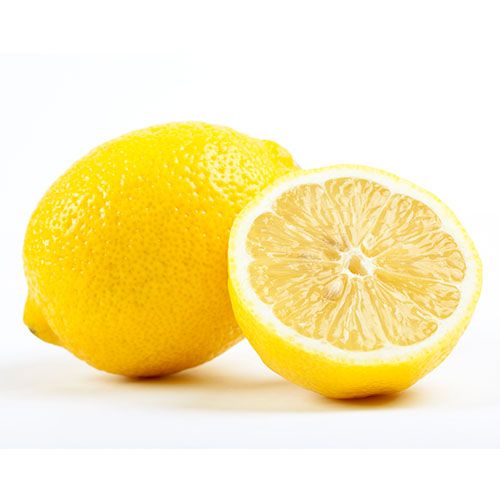 Getty Images
Getty Images
Yep, the old lemon water trick actually works. Lemon juice is very similar in acidity to the stomach’s digestive juices (yum!) says Coleman, so it can help relieve bloating and other symptoms of indigestion. By drinking lemon juice on the reg, you’re doubling down on hydration plus getting acids to help your GI tract move things along faster.
Per ounce of lemon juice: 7 calories, 0.1 g fat (0 g sat fat), 1 mg sodium, 2 g carbohydrates, 1 g of sugar, 0.1 g fiber, 0.1 g protein
6. Cantaloupe
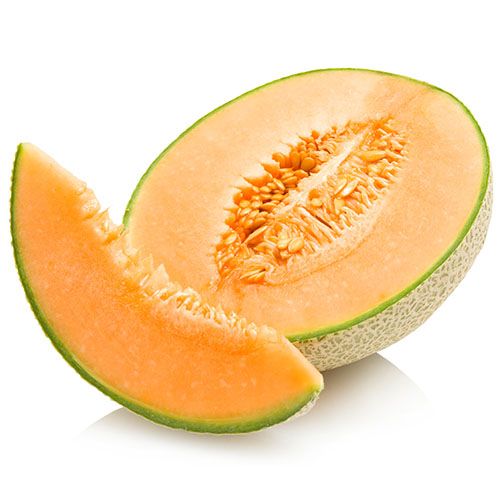 Getty Images
Getty Images
Don’t let the sweetness fool you—melons are nearly all water (90 percent!). “The water content in cantaloupe, as well as watermelon and honeydew, is equivalent to having water from a glass,” says Kirkpatrick—helping hydrate your body and reduce bloating. “They’re also natural diuretics, so they help you urinate excess water and salt from your body.”
Cantaloupe also has more potassium than other melons, which helps your body flush out any excess sodium and water it’s holding onto, says Cording.
Per cup of cubed cantaloupe: 54 calories, 0.3 g fat (0 g sat fat), 25 mg sodium, 13 g carbohydrates, 13 g of sugar, 2 g fiber, 1 g protein
7. Avocado
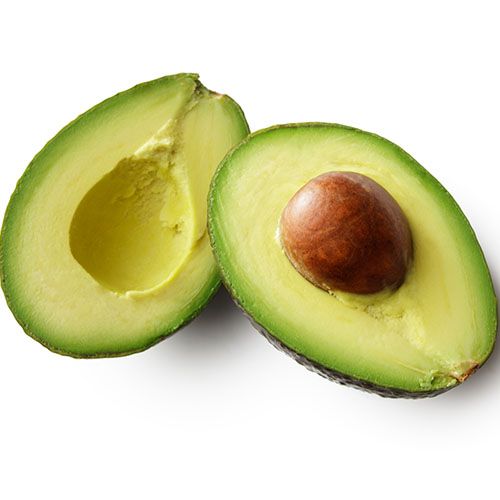 Getty Images
Getty Images
If you’re on a low-carb diet, like keto, avocados are an excellent source of bloat-reducing potassium and antioxidants for just six carbs—a quarter what you’d get in a banana. “After an indulgent weekend, people think you need to starve it out on celery and lettuce, but avocados are a nutrient-rich food that will help you feel satisfied so you’re not hangry when you’re trying to get back on track,” says Cording.
Per 1/3 fruit: 106 calories, 10 g fat (1 g sat fat), 5 mg sodium, 6 g carbohydrates, 0.4 g of sugar, 4 g fiber, 1 g protein
8. Canned pumpkin
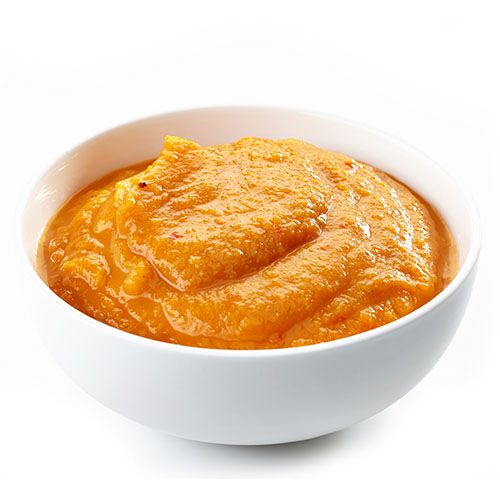 Getty Images
Getty Images
Another potassium-pumped food, winter squash like pureed pumpkin also serves up a hefty dose of fiber to help get things moving through your digestive tract—which helps with bloating and gas. You’ll also get a whopping 14,000 IU of vitamin A to help soothe inflammation, adds Cording.
Per half cup of puree: 50 calories, 0 g fat (0 g sat fat), 10 mg sodium, 11 g carbohydrates, 4 g of sugar, 4 g fiber, 2 g protein
9. Cucumber
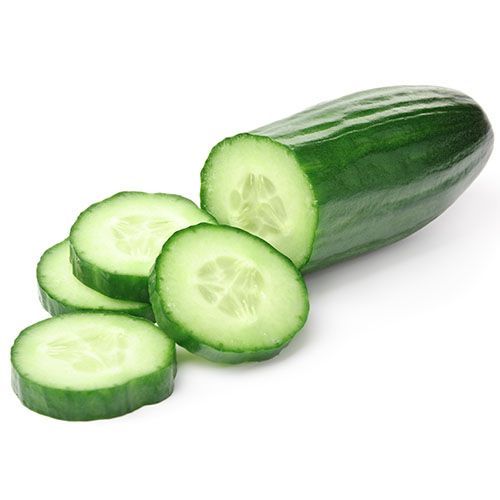 Getty Images
Getty Images
“Cucumber contains lots of water to help keep you hydrated,” says Cording, which is great for helping to clear out excess water from your cells and gas from your GI tract. What’s more, cucumbers contain sulfur and silicon, which act as a mild natural diuretic that makes you pee. They’re also a good way to get your GI tract moving minus the gassy factor of cruciferous veggies.
Per 1/2 cup slices: 8 calories, 0.06 g fat (0 g sat fat), 1 mg sodium, 2 g carbohydrates, 1 g of sugar, 0.3 g fiber, 0.3 g protein
10. Asparagus
 Getty Images
Getty Images
The amino acid asparagine in asparagus is another known diuretic that helps reduce water retention. “Asparagus also contains prebiotic fiber, which are good to nourish the probiotics in your gut and keep your digestive tract running,” says Cording.
Per 1 cup serving (raw): 27 calories, 0.3 g fat (0 g sat fat), 0 mg sodium, 5 g carbohydrates, 3 g of sugar, 3 g fiber, 3 g protein
11. Kiwi
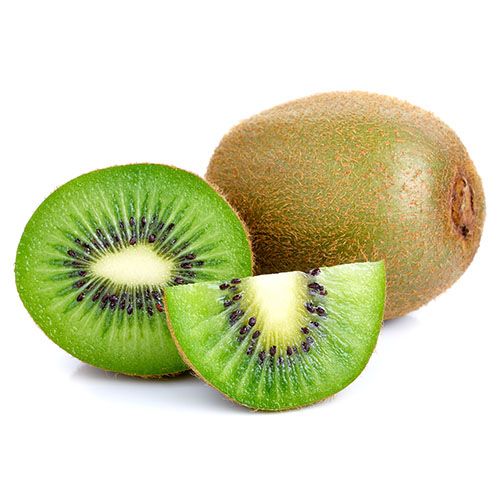 Getty Images
Getty Images
These powerful little fruits contain another enzyme, actinidin, that helps speed digestion, says Cording. Just two kiwis are also an excellent source of bloat-beating potassium and fiber—all for just 90 calories.
Per 2 whole kiwis: 90 calories, 1 g fat (0 g sat fat), 0 mg sodium, 22 g carbohydrates, 13 g of sugar, 4 g fiber, 2 g protein
12. Papaya
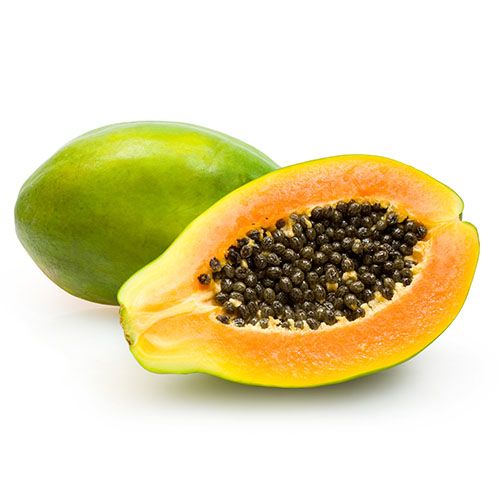 Getty Images
Getty Images
The papain in papayas is yet another enzyme that helps break down the foods you eat and fight inflammation. “You can buy papain in supplement form. It’s very effective for soothing the digestive process, especially during the menstrual cycle,” says Cording. You’ll also get fiber along with a healthy dose of the anti-inflammatory vitamin A. Just keep a serving to one cup, adds Cording, since the high amount of fructose can sometimes be rough on your GI system.
Per 1 cup pieces: 62 calories, 0.4 g fat (0.1 g sat fat), 12 mg sodium, 16 g carbohydrates, 11 g of sugar, 3 g fiber, 0.7 g protein
13. White beans
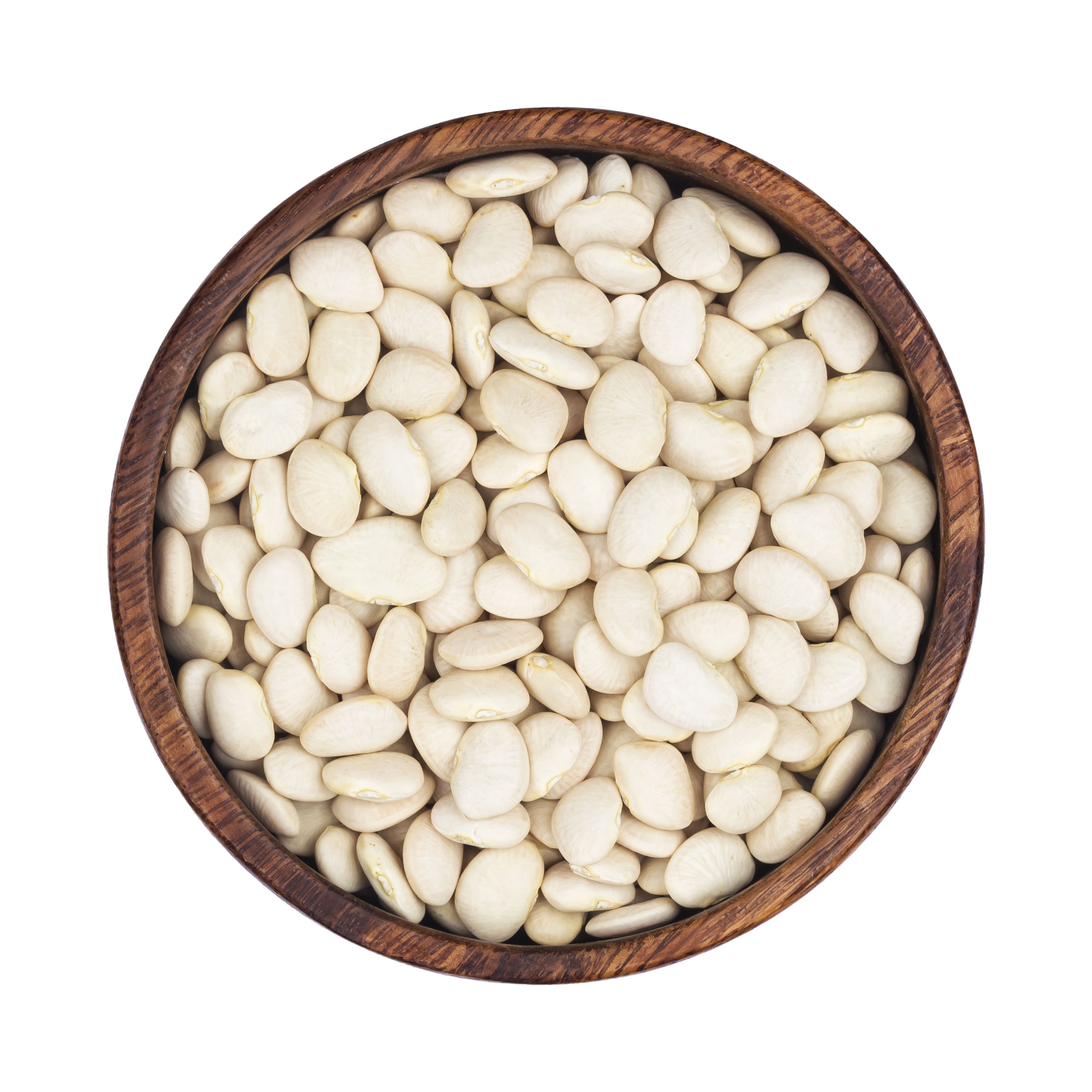 xamtiwGetty Images
xamtiwGetty Images
While other beans can lead to mega-bloat, white beans (a.k.a. navy beans) are actually “high in potassium, which helps balance out sodium levels in our body,” says Keri Gans, RD, author of The Small Change Diet.
White beans are a great addition to soups, along with kale, carrots, and other vitamin-rich veggies. Or, you can use them as an alternative to chickpeas in hummus for an equally protein-packed spread.
Per cup, cooked: 100 calories, 1.5 g fat (0 g sat fat), 110 mg sodium, 25 g carbohydrates, 2 g of sugar, 12 g fiber, 8 g protein
14. Pineapple
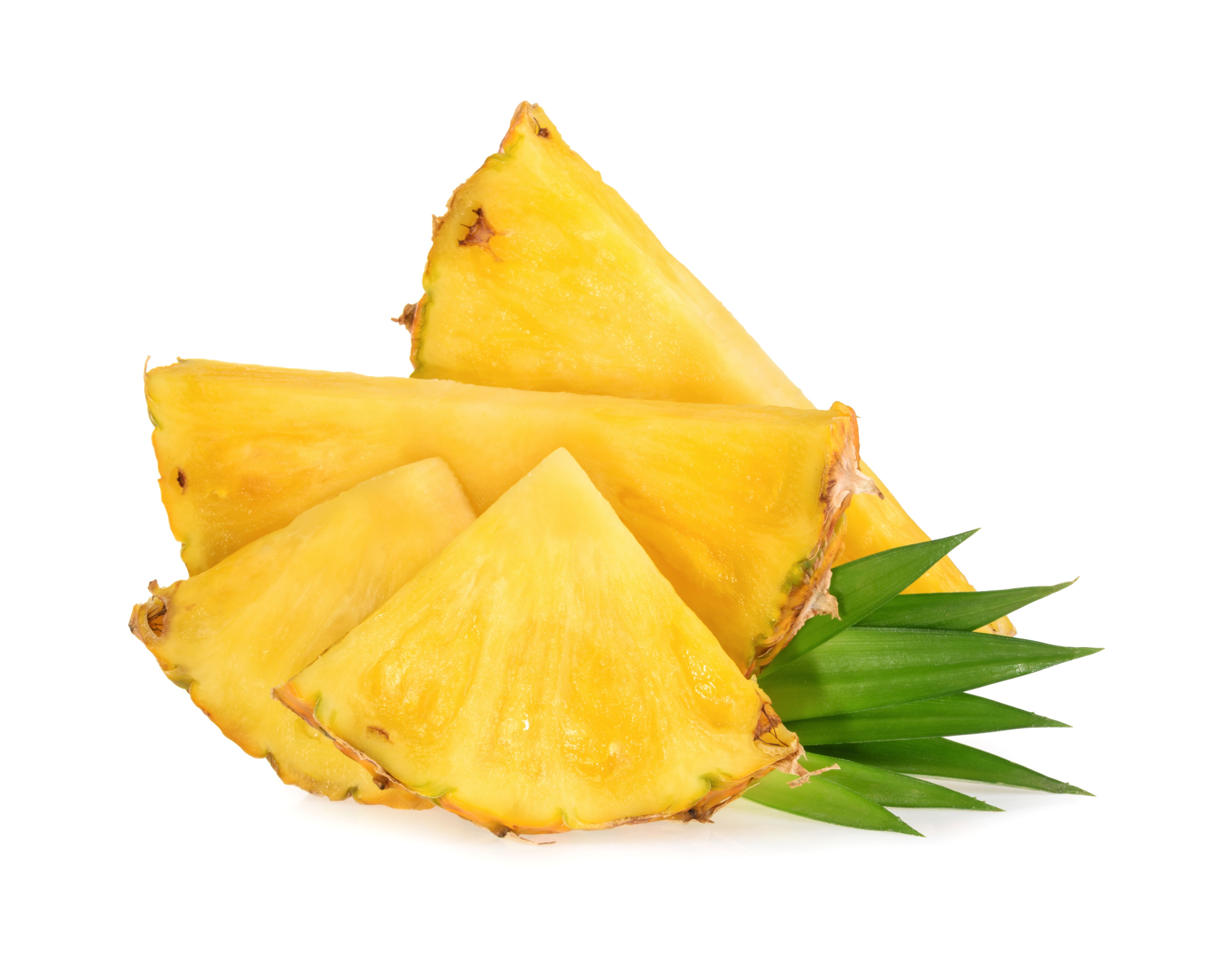 Azure-DragonGetty Images
Azure-DragonGetty Images
Another water-dense fruit, pineapple contains a digestive enzyme called bromelain, says Gans. “Mostly reported anecdotally, bromelain is thought to assist in digestion, by breaking down proteins in the stomach that may otherwise cause bloating.” Throw pineapple in your morning smoothie, or enjoy a couple slices for an afternoon snack.
Per half cup: 80 calories, 0 g fat (0 g sat fat),mg sodium, 0 g carbohydrates, 16 g of sugar, 1 g fiber, 0 g protein
15. Beets
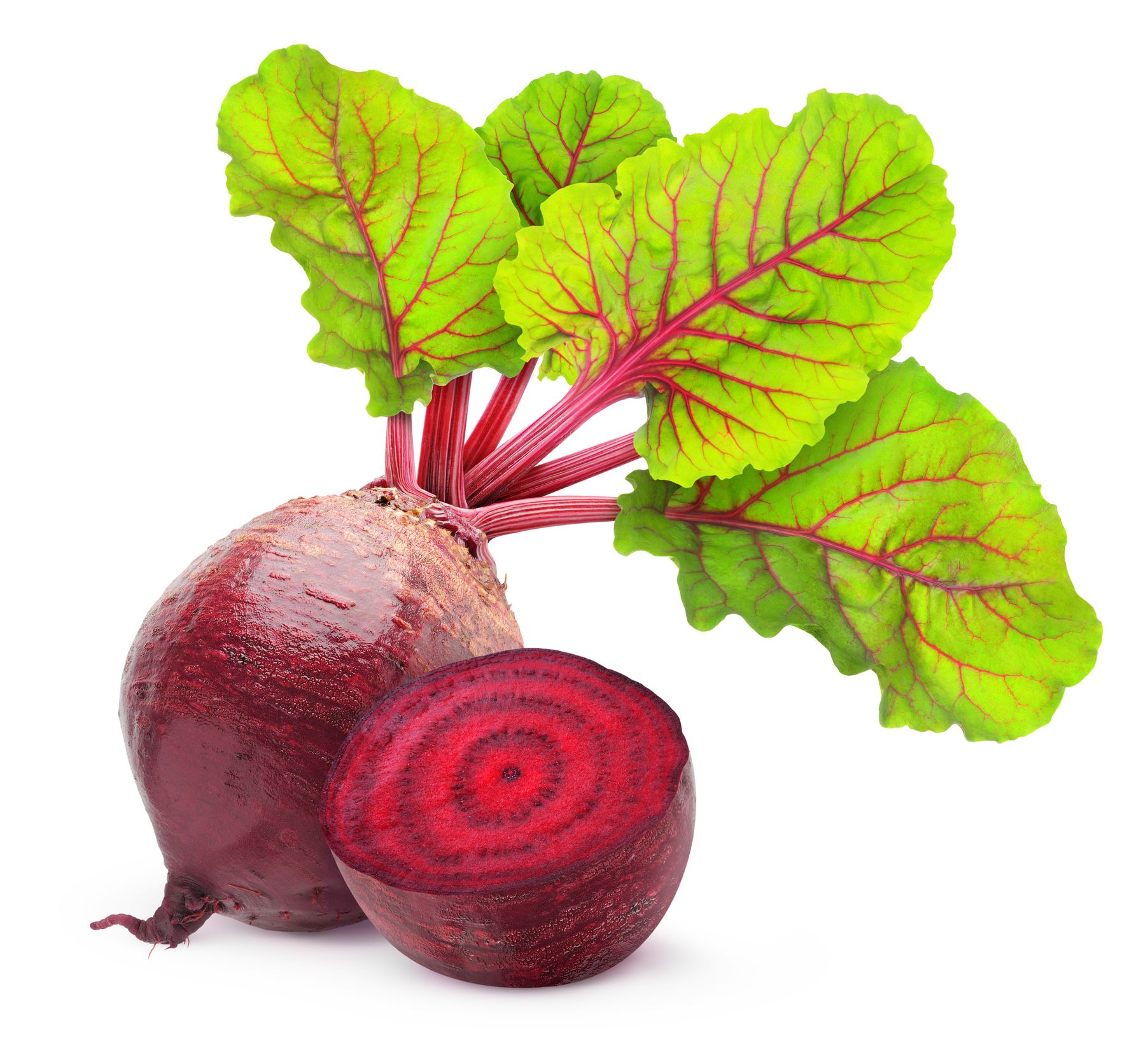 photomaruGetty Images
photomaruGetty Images
Beets are another potassium-rich food, which can help counteract sodium in your body, and therefore bloat. In fact, “One cup of beets has more potassium, fiber, and protein than a medium banana,” says Armul. Plus, it has fewer calories, too.
Add beets to your salad, roast them with a tray of veggies, or slice them into sticks and bake them to make beet fries.
Per cup, cooked: 37 calories, 0 g fat (0 g sat fat), 32 mg sodium, 12 g carbohydrates, 6 g of sugar, 2 g fiber, 1 g protein
16. Kimchi
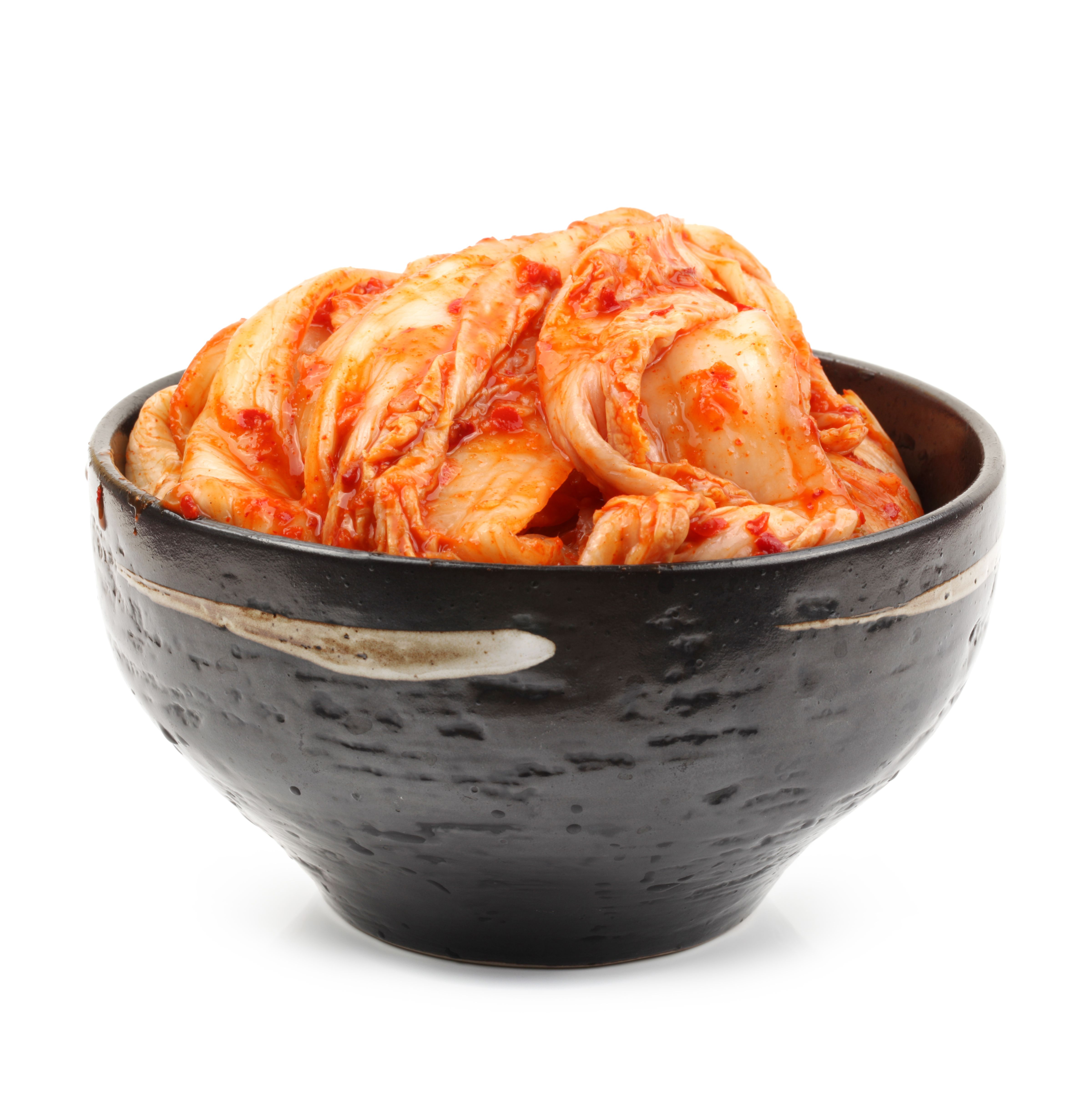 chengyuzhengGetty Images
chengyuzhengGetty Images
Yogurt isn’t your only probiotic-packed option. Kimchi—which is made from fermented cabbage—is another great choice to help with bloat, says Armul.
You can find kimchi in Korean restaurants, at most grocery stores, or you can learn to make your own at home.
Per half cup: 11 calories, 0 g fat (0 g sat fat), 374 mg sodium, 2 g carbohydrates, 1 g of sugar, 1.2 g fiber, 4 g protein
Source: Read Full Article